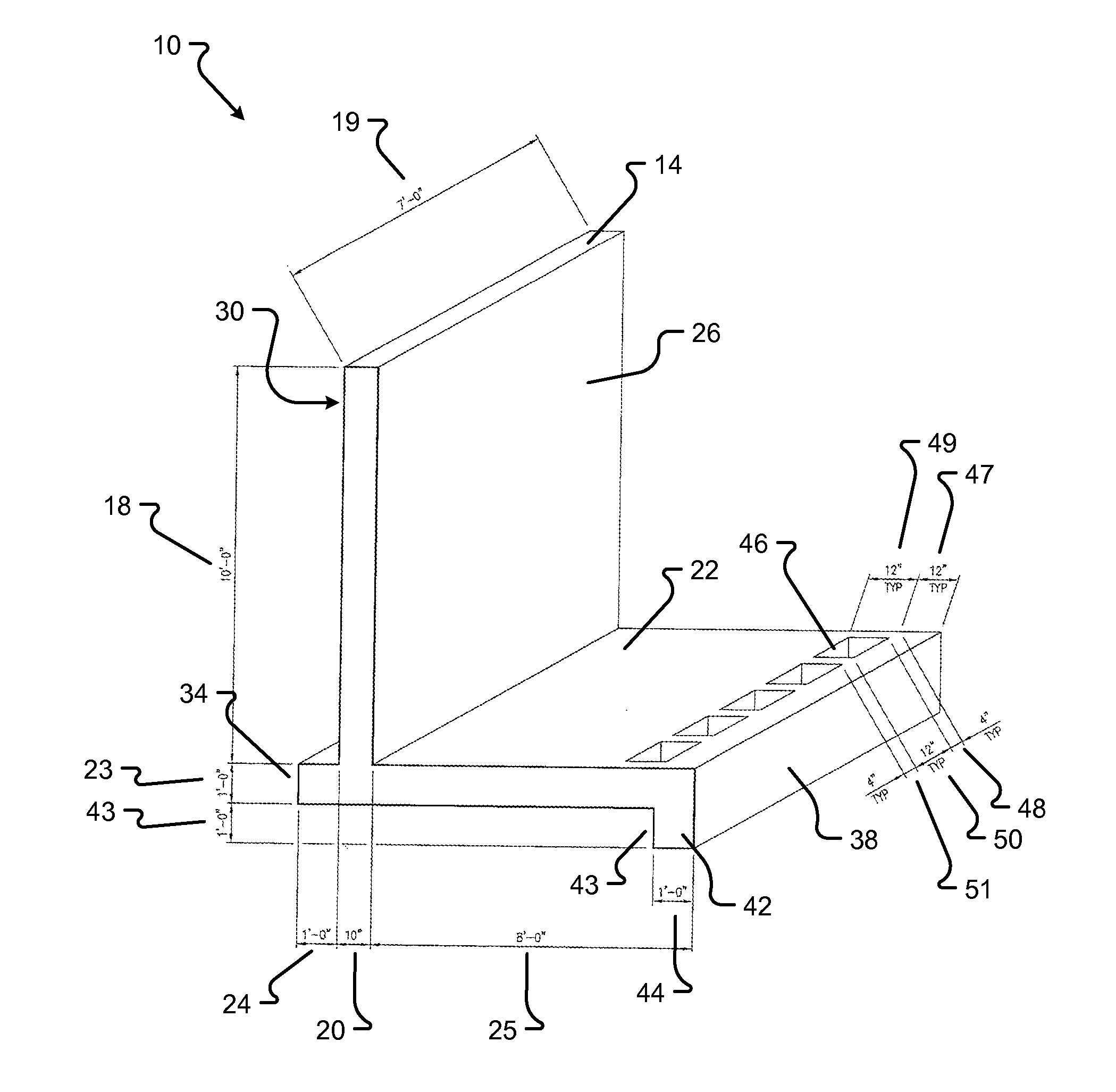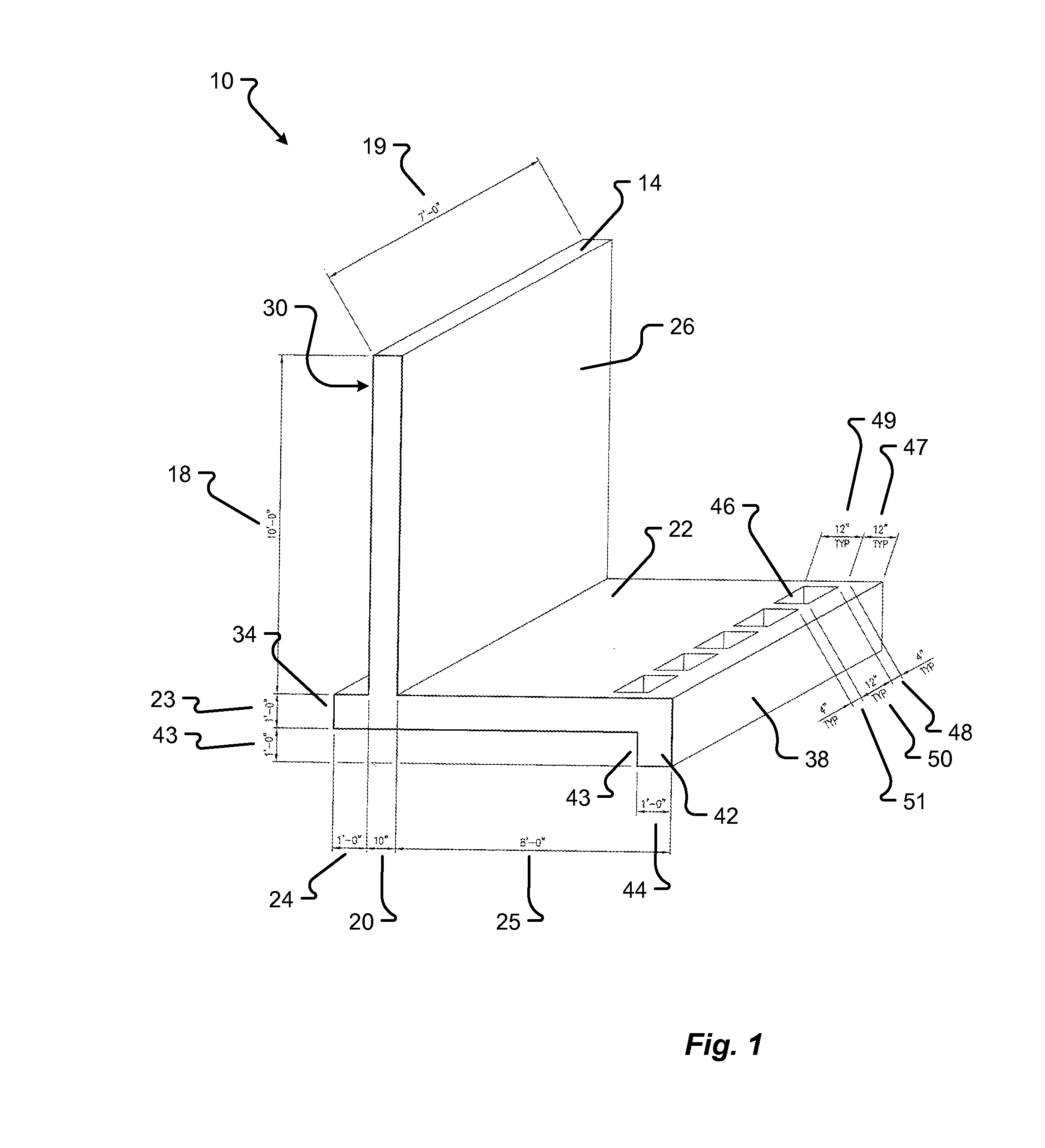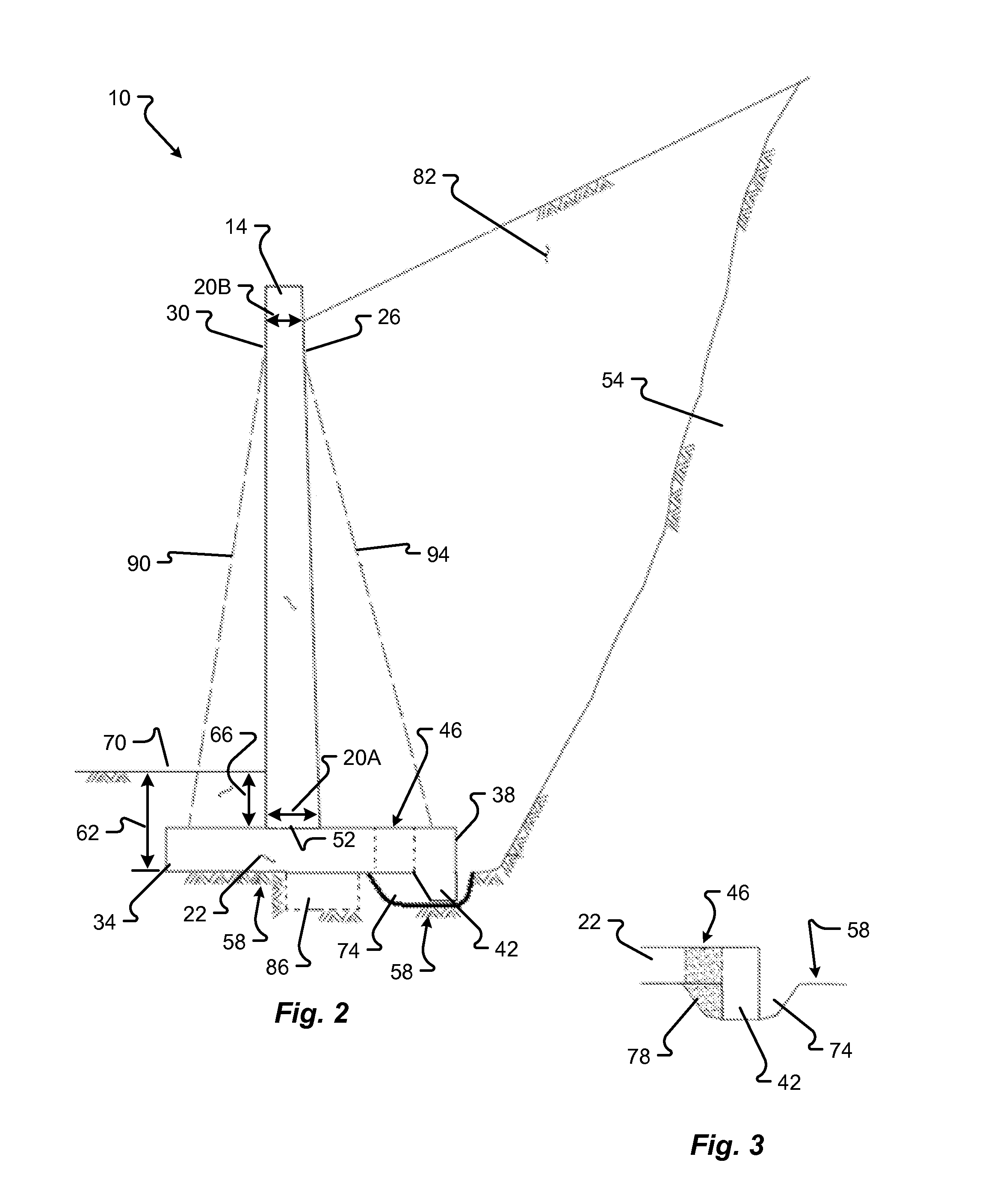Cantilevered wing wall
a technology of cantilevering and wing wall, which is applied in the field of cantilevering concrete retaining walls, can solve the problems of retaining wall base sliding outward, retaining wall tilting forward, and poor quality of soil, and achieves the effects of less susceptible to failure, cost-effective fabrication, and flexible us
- Summary
- Abstract
- Description
- Claims
- Application Information
AI Technical Summary
Benefits of technology
Problems solved by technology
Method used
Image
Examples
Embodiment Construction
[0034]Various embodiments of the present invention are described herein and as depicted in the drawings. The present disclosure has significant benefits across a broad spectrum of endeavors. It is the applicant's intent that this specification and the claims appended hereto be accorded a breadth in keeping with the scope and spirit of the invention being disclosed despite what might appear to be limiting language imposed by the requirements of referring to the specific examples disclosed. It is expressly understood that although FIGS. 1-6 depict embodiments of precast cantilevered wing walls, the present invention is not limited to these embodiments and may be used in any form of application related to retaining walls or systems and methods to prevent the inadvertent movement of soil.
[0035]Referring now to FIG. 1, an embodiment of a precast cantilevered wing wall 10 of the present invention is shown. In the example of FIG. 1, the cantilevered wing wall 10 includes a stem 14 having a...
PUM
| Property | Measurement | Unit |
|---|---|---|
| width | aaaaa | aaaaa |
| depth | aaaaa | aaaaa |
| depth | aaaaa | aaaaa |
Abstract
Description
Claims
Application Information
 Login to View More
Login to View More - R&D
- Intellectual Property
- Life Sciences
- Materials
- Tech Scout
- Unparalleled Data Quality
- Higher Quality Content
- 60% Fewer Hallucinations
Browse by: Latest US Patents, China's latest patents, Technical Efficacy Thesaurus, Application Domain, Technology Topic, Popular Technical Reports.
© 2025 PatSnap. All rights reserved.Legal|Privacy policy|Modern Slavery Act Transparency Statement|Sitemap|About US| Contact US: help@patsnap.com



